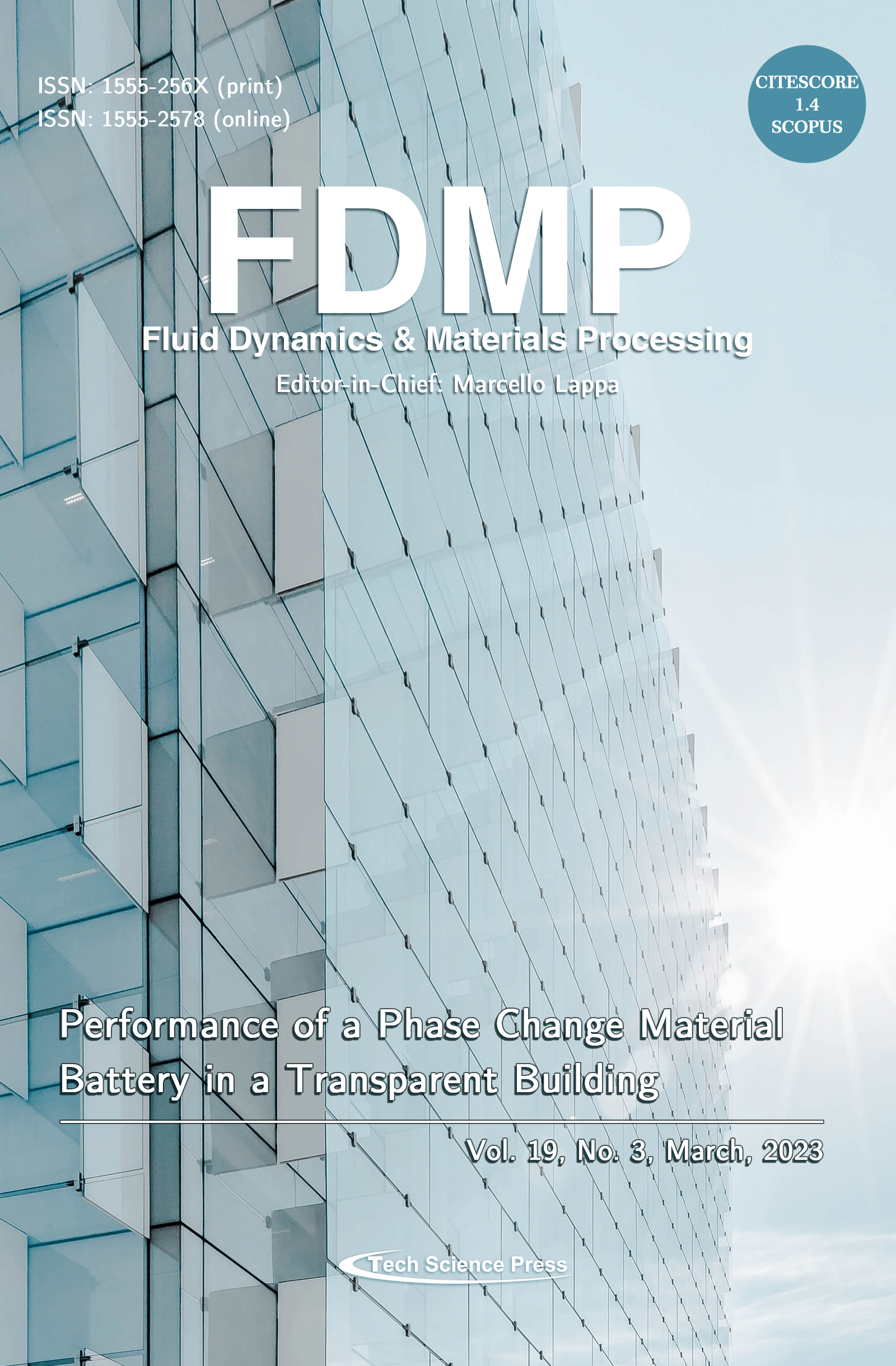Experimental Analysis of the Flow Characteristics of an Adjustable Critical-Flow Venturi Nozzle
Chun Ye1,2,3, Jingjing Gao1,2,3, Zhihui Wang1,2,3, Weibiao Zheng1,2,3, Yibei Wang2,4, Xingkai Zhang1,2,3,*, Ming Liu5
FDMP-Fluid Dynamics & Materials Processing, Vol.19, No.3, pp. 755-766, 2023, DOI:10.32604/fdmp.2022.021868
- 29 September 2022
Abstract The response of an adjustable critical-flow Venturi nozzle is investigated through a set indoor experiments aimed to determine the related critical flow rate, critical pressure ratio, and discharge coefficient. The effect of a variation in the cone displacement and liquid content on the critical flow characteristics is examined in detail and it is shown that the former can be used to effectively adjust the critical flow rate. The critical pressure ratio of the considered nozzle is above 0.85, and the critical flow control deviation of the gas flow is within ±3%. Liquid flow can reduce More >
